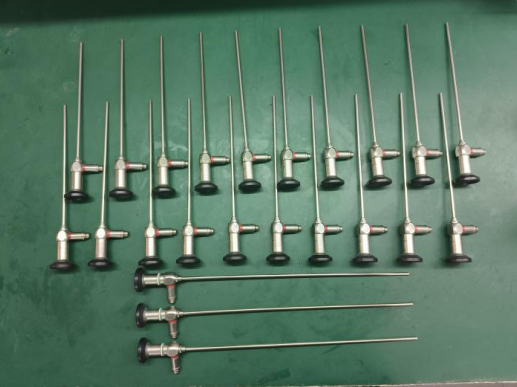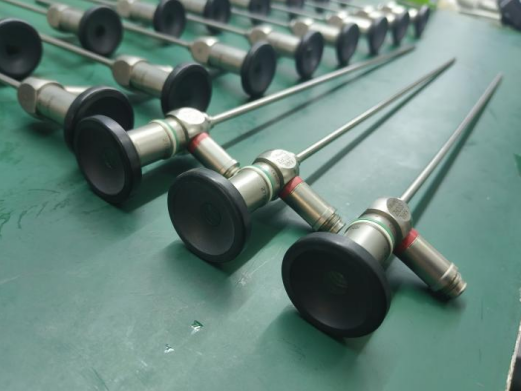Tel: +85368902598
E-mail: tina@fyendoscopy.com
Tel: +85368902598
E-mail: tina@fyendoscopy.com
Rigid endoscopes, used in most surgical procedures, enable endoscopists to view organ surfaces, blood vessels or pathological changes without making large incisions in the body, providing a clearer view than the naked eye. The main design criteria are angle of view, depth of field, magnification, image brightness, image quality, distortion and image size, which must be properly balanced.
Rigid endoscopes are commonly used for minimally invasive surgical procedures such as rhinoscopy, cystoscopy and laparoscopy. Rigid endoscopes are made from a metal tube containing a lens and optical pathway, and are available in a range of outer diameters, from 1 mm to 12 mm.
Rigid endoscopes typically have a series of high-resolution optical glass rod lenses. endoscopes can be orthogonal (0 degrees) or tilted (10-120 degrees) to allow viewing outside the telescope axis and to increase the field of view by rotating the instrument. The optical quality of the image produced by a rigid endoscope lens still exceeds that of a fibre-optic or digital image produced by a flexible endoscope.

